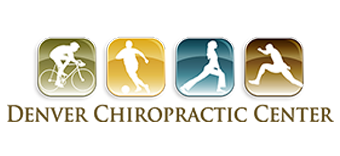I spent a recent December weekend hanging out once again with some very smart physical therapists in Brighton. We were becoming certified practitioners of the Functional Movement Screen. (Many of you may recall that this past August I went to Brighton to learn about the Selective Functional Movement Assessment. Despite their seemingly similar names, the two are different. End digression.)
I’ve been using the Functional Movement Screen for years, but decided to get officially certified because it’s becoming a key part of my practice- finding the underlying dysfunctions that end up producing pain. It’s about fixing the problem, not just getting rid of the symptoms.
The Functional Movement Screen (FMS) is a system of 7 movements that are scored on a 3-point scale. 3 is good, 1 stinks, and 2 is somewhere in between. A total of 21 is perfection. Research shows that athletes (of any level) who score 14 or less are three times more likely to get injured than athletes who score a 15 or more.
The idea is that you identify your worst functional movement and then work to correct it, thus improving your score. You then do follow up screens to determine what you need to work on next.
So I’m going to have you check yourself on the movement test considered most important – the Active Straight Leg Raise.
At first glance, this may seem like a test of hamstring flexibility. It is, and more. It also assesses your active hip flexion, and your ability to maintain hip extension on the other side. These are three very important fundamental ranges of motion.
Your hamstrings start at the knee, run up to the “Sit Bone” and then send fibers into the SI joint. This joint is continuous with the spinal muscles.
Poor performance on this test means you’re more likely to experience one or more of The Big Five- back pain, hip pain, sciatica, IT band problems, and knee pain. So scoring your Active Straight Leg Raise (ASLR) is a good place to start if you want to prevent or improve any or all of these.
The ASLR requires a stick, an optional tape measure, and a buddy. For purposes of the description here, you are the one who’s evaluating the test and your buddy is the one performing the test.
Have your buddy lie down on his back. You need to identify two points on your buddy, the kneecap and the ASIS, or point of the hip. (Start on the left side.) The hip point is that bony thing at the waistline right above where the hip flexes. Measure the distance between the two points to find the middle of the thigh. The middle of the thigh is the reference point for this test.

Once you’ve found the middle of the thigh. Stand the stick up to mark the spot.

Your buddy is still on his back. (If you are a woman and your buddy is a guy, he’s probably making smart-ass remarks at this point because he knows he’s about to do a really bad job on this thing. Try to take pity on him.) Your buddy’s head must stay on the ground, his arms at his sides, and his palms UP, to avoid cheating.
So, your stick is at mid thigh on the outside of the left leg. Have your buddy raise the left leg – with the knee straight – as high as he can. The right leg MUST stay flat on the ground. If your buddy can get his left ankle (the bumpy bone on the outside of the ankle) above the stick, he gets a 3. If he can get his ankle between the stick and the left kneecap, he gets a 2. If he can’t raise the ankle past the level of the left kneecap, that’s 1. (3 pics)

Erin gets a 3 for this effort, her heel is above her mid-thigh

With her heel between the stick and her right knee, Erin gets a 2.

Erin couldn’t raise her foot past her right knee, so she gets a 1. Boo.
Now test the other side. When scoring, a 3 on each side is ideal. 2 on each side is OK. 1 on each side is bad. Different scores on each side is considered an asymmetry, and that’s bad.
If you’re interested in getting a baseline score for how your body is functioning, call up and make an appointment. We don’t charge any extra fees in conjunction with a treatment. The idea is to figure out which Functional Movement you score lowest on and take steps to improve it. We’ve developed rehab protocols to improve each pattern and improve your overall score. This reduces your likelihood of getting injured.





